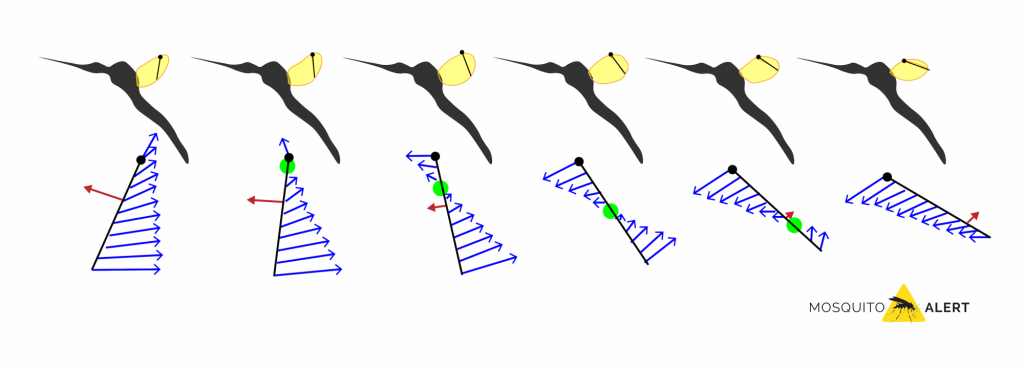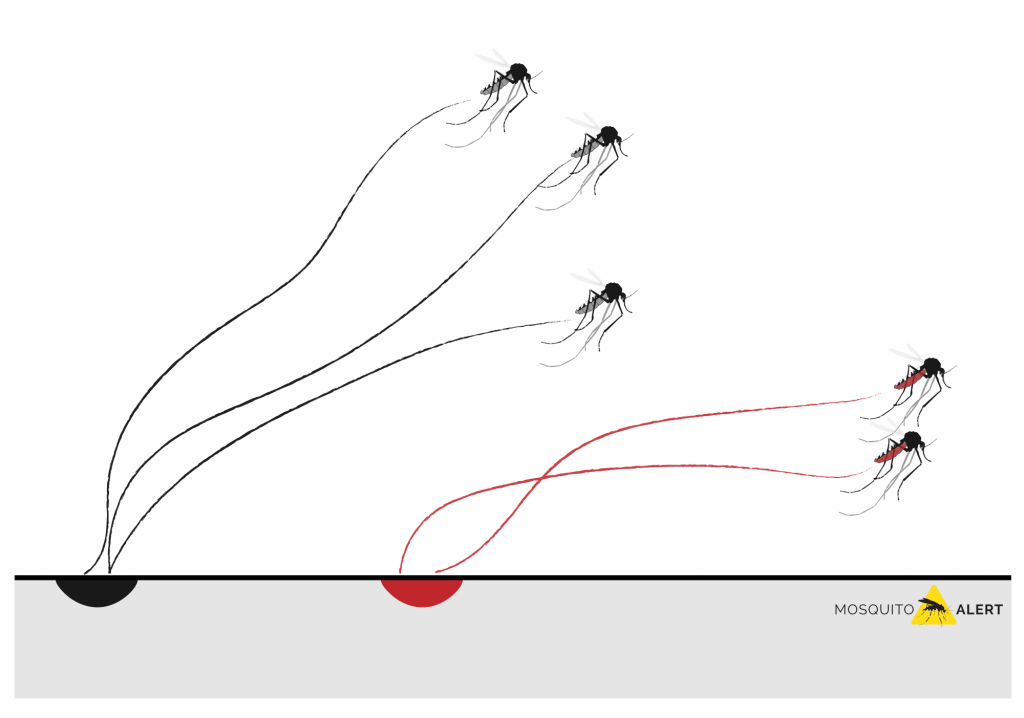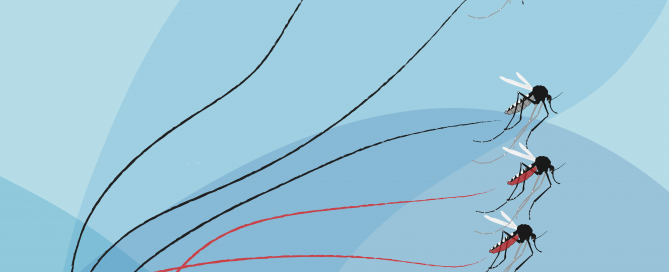Imagine you sneak into a banquet. A huge one. Where there is plenty of food everywhere. You eat, eat and eat. You eat so much that without realizing it you have doubled or tripled your weight. You can’t anymore It’s time to sneak out, you think, but do you think you could do it? You have doubled your weight, you will be slow, you would move dragging the belly, the most possible is that you collapsed. But if you were a mosquito, things would be completely different. If you were a mosquito, you would take off without problems after the feast, and most important of all, you would fly without being detected.
It is so important for a mosquito to detect a possible source of food, of which we speak in a previous post, such as biting and taking off without being detected. It is of little use to have filled with blood if in the end it is detected and removed. The truth is that a female mosquito is able to double or triple its weight after feeding and, nevertheless, they manage to leave without in most cases the host notices.
How do they avoid being detected?
A couple of years ago a team of researchers from the University of Wageningen (Netherlands) and the University of California, Berkeley (United States) asked themselves the same question, and to solve it they decided to record the take-off maneuver of several mosquitoes, using to It high speed cameras.
What they raised was not an easy task. They needed to film up to 600 Anopheles coluzzii mosquitoes in order to finally obtain a few quality sequences with which to study their movements. In the end they were able to analyze the take-off of 32 mosquitoes that had fed and tried to take off with the abdomen full of blood and 31 non-fed mosquitoes.
From the analysis of the images, they discovered that mosquitoes use a different take-off technique than birds or other insects. Both birds and flies first use their legs to jump before starting to flap their wings. This momentum takes us to notice when a fly leaves us. We feel the pressure of its small legs making force to jump on our skin.
Mosquitoes have a different takeoff mechanism. They accelerate the movement of their wings dramatically, reaching 600 flutters per second (see original video by Mujire et al. 2017, Journal of Experimental Biology 220: 3751-3762). A flutter speed that is approximately three times faster than that of most insects that have data to date.
A unique aerodynamics
Scientists have also observed that during this flutter a mosquito changes the angle of the wings (Fig. 1). An earlier study, published that same year, had managed to unveil the aerodynamics of mosquito flight, describing the forces that pushed and projected the mosquito on its flight. A mechanism based on rotating the wing along the flutter, so that these angle changes allow the wing to “push” air for a greater distance. As if they were oars. These movements provide more than half of the force needed to take off (64%). A little jump and it’s gone without us knowing.

Fig. 1. Sequence of the flutter of a mosquito in which there is a change in the axis of rotation (green dot). The blue arrows indicate the local movement of the wing during the pulse, the red arrow indicates the resulting aerodynamic force vector. Figure inspired by the original of: Bomphrey et al. (2017) Nature 544: 92-95. Source: Mosquito Alert ((CC-BY-NC-2.0)
The anatomy of his legs plays an important role too. Its long legs allow the force to extend along its length. The pressure they exert to propel themselves upward is distributed along the legs, making their strength almost imperceptible to those from whom they feed.
A fed mosquito that has doubled its weight does not take off the same
In summary, the mosquito takes off in such a soft way and without exerting hardly any force on the host’s skin, that they are rarely detected. They don’t take off fast as flies do, they take their time but it works for them. Natural selection has favored a takeoff mechanism that makes them almost impossible to detect. Is it always like this?

Fig. 2. Take-off trajectories of some of the mosquitoes filmed during the experiment of Mujire et al. (2017). Black paths belong to mosquitoes that have not been fed, red paths to mosquitoes that have been fed with blood. Note the angle of takeoff in both groups. Source: Mosquito Alert ((CC-BY-NC-2.0)
However, feeding and doubling or tripling your weight has a cost. Individuals fed were slower than those not fed. Almost a fifth slower. And its angle of ascent was also smaller, 28% less than that of the non-fed (Fig. 2). It is not as difficult for them to move as for us after a great feast or a New Year’s dinner, but the weight and volume gained affect their ability to take off making them more susceptible to being hunted.
It is that point at which, from time to time, we manage to kill some of them. Although as a rule, they detect us, they feed on our blood and then leave as quietly as they arrived. We did not find out about its action until the sting of the sting begins.
References:
Bomphrey RJ, Nakata T, Phillips N, Walker SM. (2017) Smart wing rotation and trailing-edge vortices enable high frequency mosquito flight. Nature 544: 92-95
Mujires FT, Chang SW, van Veen WG, Spitzen J, Biemans BT, Koehl MAR, Dudley R. (2017) Escaping blood-fed malaria mosquitoes minimize tactile detection without compromising on take-off speed. Journal of Experimental Biology 220: 3751-3762
Roitberg BD, Mondor EB, Tyerman JGA. (2003) Pouncing spider, flying mosquito: blood acquisition increases predation risk in mosquitoes. Behavioral Ecology 14: 736-740




